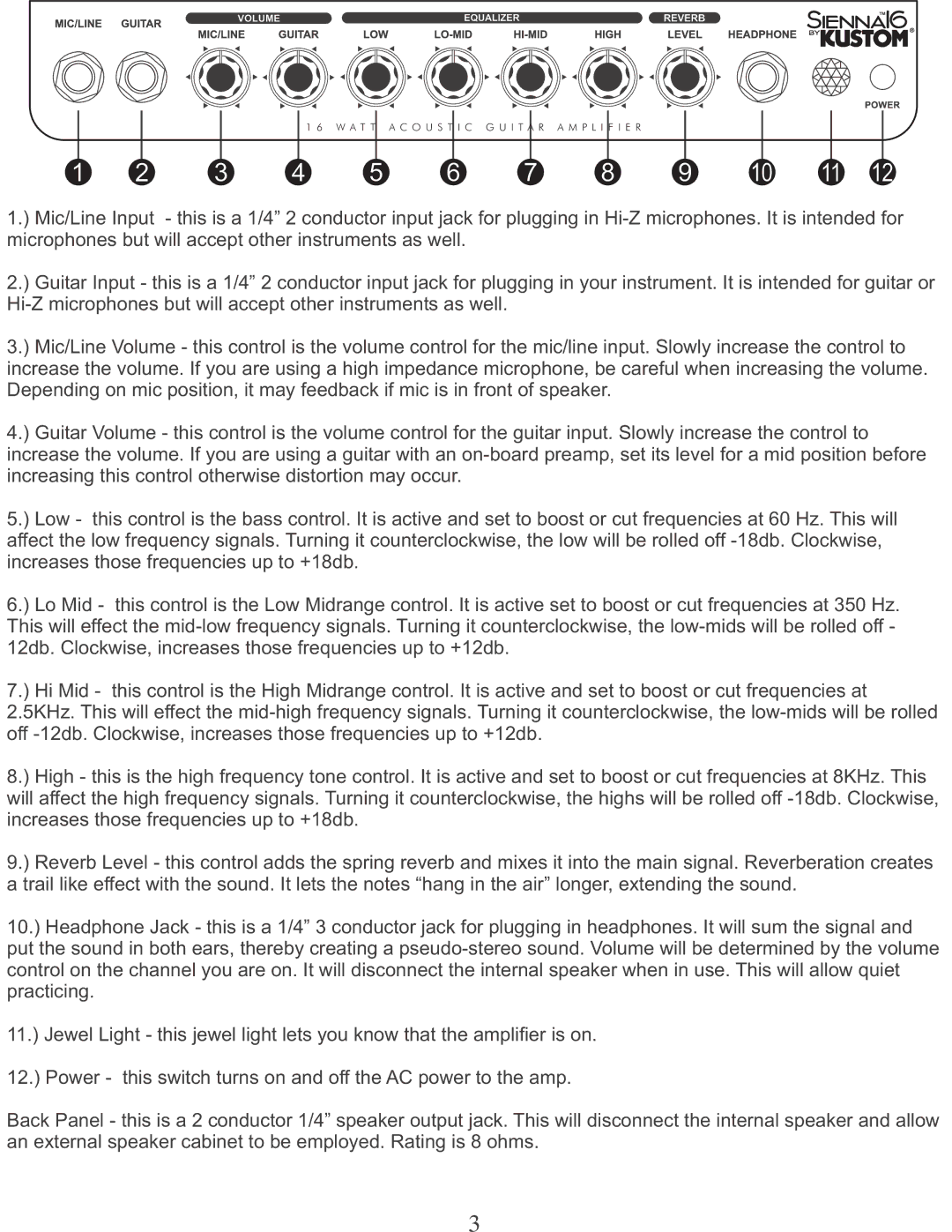
1 6 W A T T
A C O U S T I C G U I T A R A M P L I F I E R
1.) Mic/Line Input - this is a 1/4” 2 conductor input jack for plugging in
2.) Guitar Input - this is a 1/4” 2 conductor input jack for plugging in your instrument. It is intended for guitar or
3.) Mic/Line Volume - this control is the volume control for the mic/line input. Slowly increase the control to increase the volume. If you are using a high impedance microphone, be careful when increasing the volume. Depending on mic position, it may feedback if mic is in front of speaker.
4.) Guitar Volume - this control is the volume control for the guitar input. Slowly increase the control to increase the volume. If you are using a guitar with an
5.) Low - this control is the bass control. It is active and set to boost or cut frequencies at 60 Hz. This will affect the low frequency signals. Turning it counterclockwise, the low will be rolled off
6.) Lo Mid - this control is the Low Midrange control. It is active set to boost or cut frequencies at 350 Hz. This will effect the
7.) Hi Mid - this control is the High Midrange control. It is active and set to boost or cut frequencies at 2.5KHz. This will effect the
8.) High - this is the high frequency tone control. It is active and set to boost or cut frequencies at 8KHz. This will affect the high frequency signals. Turning it counterclockwise, the highs will be rolled off
9.) Reverb Level - this control adds the spring reverb and mixes it into the main signal. Reverberation creates a trail like effect with the sound. It lets the notes “hang in the air” longer, extending the sound.
10.) Headphone Jack - this is a 1/4” 3 conductor jack for plugging in headphones. It will sum the signal and put the sound in both ears, thereby creating a
11.) Jewel Light - this jewel light lets you know that the amplifier is on.
12.) Power - this switch turns on and off the AC power to the amp.
Back Panel - this is a 2 conductor 1/4” speaker output jack. This will disconnect the internal speaker and allow an external speaker cabinet to be employed. Rating is 8 ohms.
3
